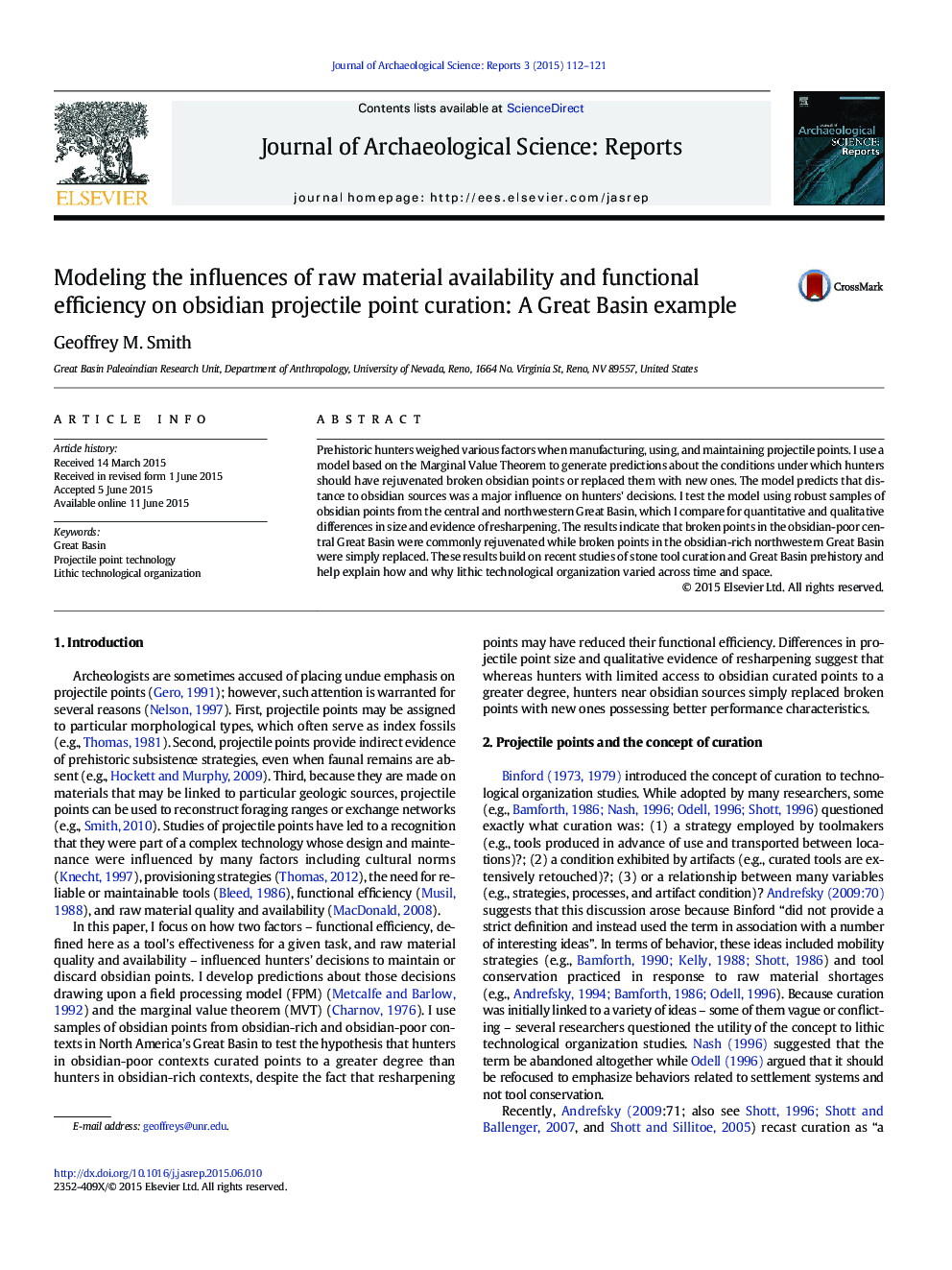| Article ID | Journal | Published Year | Pages | File Type |
|---|---|---|---|---|
| 7446042 | Journal of Archaeological Science: Reports | 2015 | 10 Pages |
Abstract
Prehistoric hunters weighed various factors when manufacturing, using, and maintaining projectile points. I use a model based on the Marginal Value Theorem to generate predictions about the conditions under which hunters should have rejuvenated broken obsidian points or replaced them with new ones. The model predicts that distance to obsidian sources was a major influence on hunters' decisions. I test the model using robust samples of obsidian points from the central and northwestern Great Basin, which I compare for quantitative and qualitative differences in size and evidence of resharpening. The results indicate that broken points in the obsidian-poor central Great Basin were commonly rejuvenated while broken points in the obsidian-rich northwestern Great Basin were simply replaced. These results build on recent studies of stone tool curation and Great Basin prehistory and help explain how and why lithic technological organization varied across time and space.
Keywords
Related Topics
Social Sciences and Humanities
Arts and Humanities
History
Authors
Geoffrey M. Smith,
